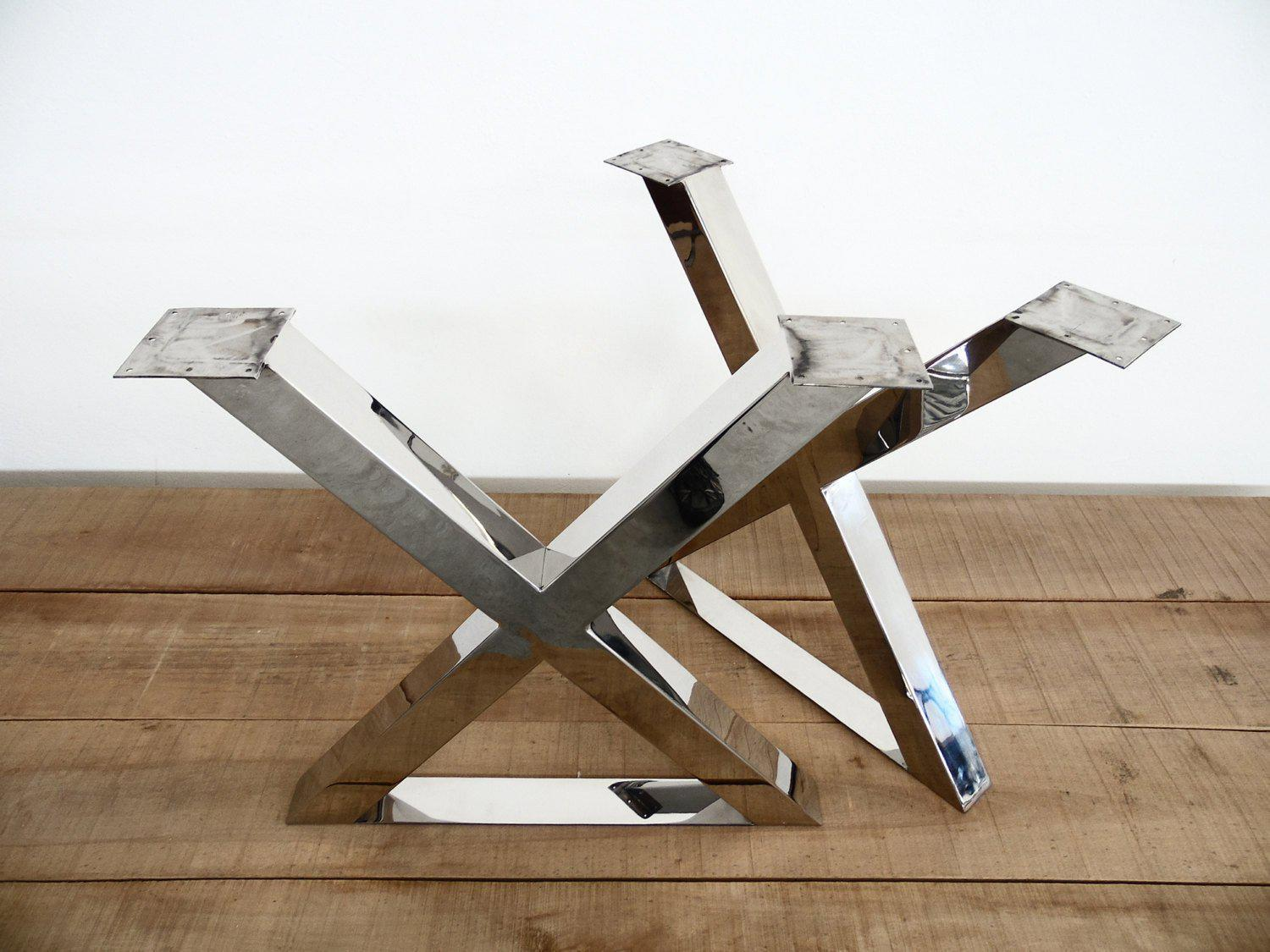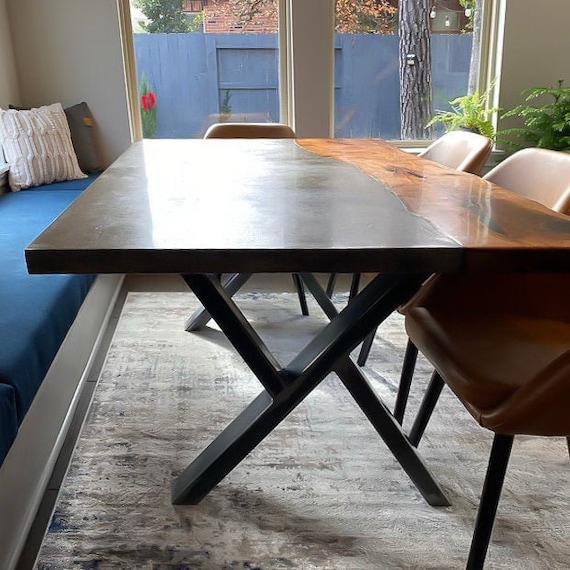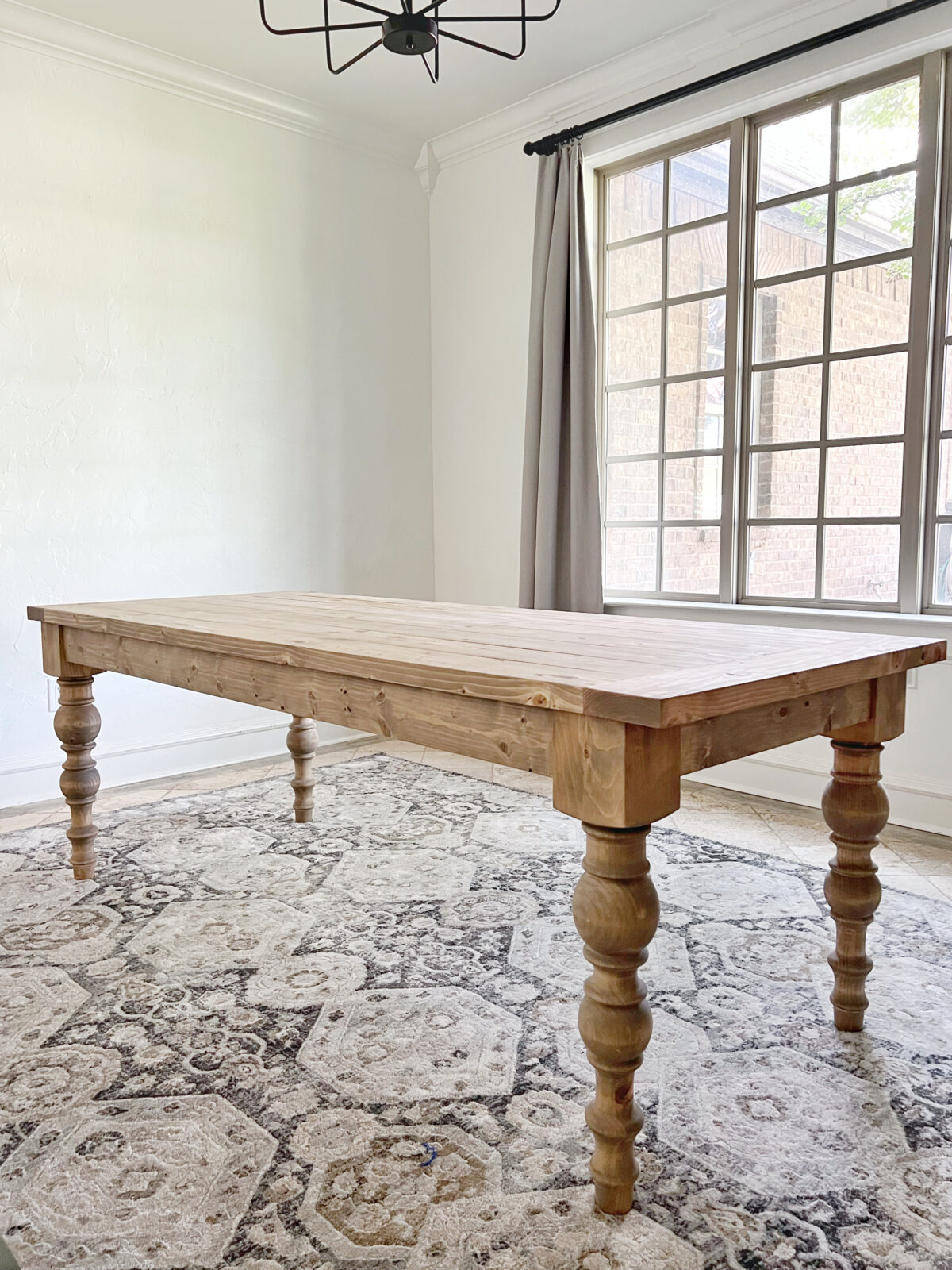Discovering the Various Kinds of Eating Table Legs Timber for Your Dining Area
The selection of eating table legs wood can profoundly affect both the aesthetic and functional top qualities of your eating area. Strong timber alternatives, such as oak and walnut, provide a timeless look with unequaled longevity, while crafted timber alternatives provide cutting-edge styles that imitate the splendor of all-natural grains. Additionally, the expanding fad of reclaimed wood presents a lasting element that allures to eco conscious customers. As we discover these various alternatives, it becomes important to think about not only the visual allure but likewise the useful effects of each material choice. What factors should lead your decision?
Solid Wood Options

Furthermore, solid wood is renowned for its strength and longevity. Unlike crafted materials, strong timber is less susceptible to warping and damage in time when appropriately kept. This makes it an optimal selection for family members or those who regularly host gatherings. Each piece of solid wood is one-of-a-kind, showcasing private attributes that include to the beauty and character of the table.
In addition, strong timber can be finished in various means, ranging from natural oils to tarnished coatings, enabling home owners to individualize their furnishings to match their decoration. In recap, choosing solid timber for eating table legs not just ensures structural honesty but additionally boosts the visual appeal of the eating area, making it a beneficial investment for any kind of home.
Engineered Timber Alternatives

Plywood, built from numerous layers of wood veneer, is particularly solid and steady, making it an outstanding choice for dining table legs. Its layered make-up permits it to hold up against modifications in moisture and temperature level better than typical solid wood. MDF, on the other hand, offers a smooth surface area for painting or veneering, allowing developers to achieve a polished look while keeping architectural honesty.
Particleboard, typically made use of in economical options, supplies decent strength and is lightweight, making it much easier to handle. However, it may not be as sturdy as plywood or MDF. When selecting engineered timber choices, it is necessary to take into consideration the designated use and desired aesthetic. These products not only enhance the capability of dining rooms yet likewise enable greater style versatility, making sure that contemporary and conventional designs can coexist harmoniously.
Reclaimed Timber Includes
Redeemed wood provides a distinct mix of sustainability and personality, making it a progressively preferred option for dining table legs. Sourced from old barns, factories, and other structures, redeemed timber embodies a background that brand-new materials simply can not duplicate. Each item lugs its very own tale, marked by unique flaws, knots, and varying grain patterns, which add to a table's unique visual allure.
Along with its aesthetic beauty, reclaimed wood is an environmentally pleasant choice. By repurposing formerly used products, it lowers the demand for new lumber, therefore aiding to lessen and conserve woodlands waste. This aligns with a growing customer preference for sustainable techniques in furniture.
Moreover, recovered wood is typically much more long lasting than newly harvested timber because of its age. The all-natural drying out process that reclaimed timber undergoes results in a denser and more powerful material, making it much less vulnerable to warping and splitting. This enhances the long life of eating tables, permitting them to withstand the rigors of daily usage.
Softwood vs. Wood
When choosing dining table legs, recognizing the differences in between softwood and wood is crucial for achieving both aesthetic and functional objectives. They usually display a more rustic appearance, making them ideal why not find out more for country-style or informal dining spaces.
On the other hand, woods, sourced from deciduous trees like maple, cherry, and oak, are renowned for their density, strength, and toughness. The intricate grain patterns and abundant shades of woods supply a classic and sophisticated appeal, making them ideal for official eating setups. While hardwoods tend to be more expensive and much heavier, their durability against wear and tear frequently warrants the financial investment.
Inevitably, the selection in between softwood and wood for dining table legs must align with your style vision, use needs, and budget plan, making sure that your dining area reflects your personal style while remaining functional over time.

Surfaces and Treatments
The visual allure and longevity of table legs can be significantly improved through numerous coatings and therapies. These procedures not just shield the wood from damage but additionally elevate its appearance, permitting it to match diverse indoor styles.
One typical therapy is staining, which penetrates the timber and improves its all-natural grain while adding shade. Discolorations give a rich, sophisticated appearance, enabling property owners to match their furniture with existing style. Alternatively, clear coatings such as polyurethane or varnish develop a safety layer without changing the wood's initial hue, ensuring toughness against deterioration.
Additionally, natural oils, like tung or linseed oil, nurture the timber and offer a subtle luster, all while being environment-friendly. These oils permit the surface area to breathe, preventing wetness buildup and potential warping.
For those seeking a rustic appeal, weathered or troubled finishes can be used to produce an aged appearance, including personality to the item. Eventually, the choice of surfaces and treatments depends on personal preference, desired appearances, and the specific timber type, making it necessary to think about these elements when picking eating table legs for your space.
Verdict
In final thought, the selection of table leg products significantly influences both the useful and visual facets of a dining space. Solid woods, crafted options, and redeemed options each deal distinctive advantages, catering to different choices and demands. Recognizing the differences between hardwoods and softwoods, along with proper surfaces and treatments, allows for informed decision-making. Inevitably, the choice of wood type ought to line up with preferred style, sturdiness, and environmental factors to consider, enhancing the general eating experience.
The selection of dining table legs timber can exceptionally impact both the functional and aesthetic high qualities of your dining area - find this Dining Table Legs Wood. Solid wood options, such as oak and walnut, give a traditional appearance with unmatched toughness, while engineered wood choices provide cutting-edge styles that mimic the splendor of all-natural grains. Solid wood supplies an ageless top quality that can raise the total design of an eating space. Each item of solid wood is one-of-a-kind, showcasing individual attributes that add to the appeal and character of the eating table
Furthermore, redeemed timber is often more durable than newly harvested check my reference wood due to its age.